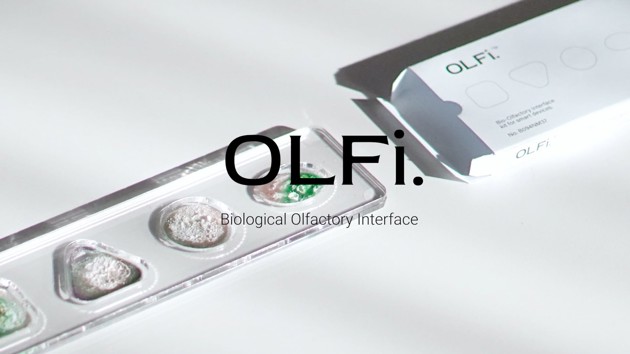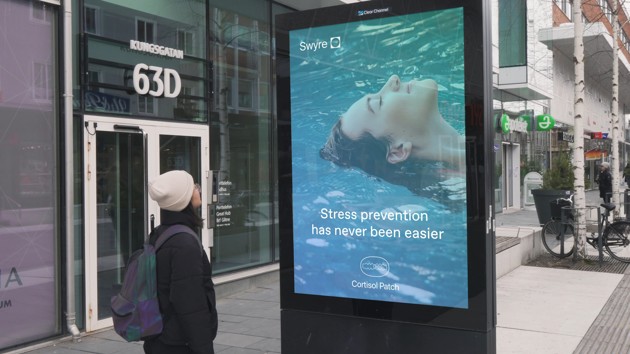Biodesign: Embracing Dystopia
In a challenge to develop speculative concepts designing with living things, students were asked to look into the future to explore how biodesign might shape our societies through the 21st century.
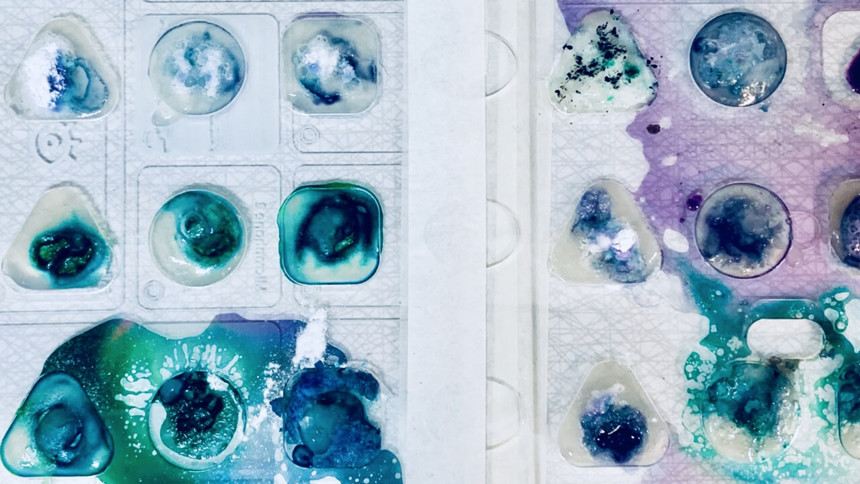
Designers give form and function to things, relations and societies. But what's the next step in the evolution of design? Recent trends suggest that it will involve exploring the evolution of our own species, and all living things for that matter. Biology, that is. In the early 2000s, Steve Jobs famously predicted that "the biggest innovations of the 21st century will be at the intersection of biology and technology".
Today, biodesign is a rapidly developing field with the capacity to create both excitement and skepticism, along with extreme visions of utopian and dystopian worlds.
When we start to incorporate living organisms as building blocks in the design process, it presents us with vast opportunities. At the same time, the mere notion of tampering with the human biology raises potentially divisive discussions ranging from ethics, to integrity, to philosophy. When students from the IxD programme kicked of a project exploring new innovations in biodesign, the purpose was not to steer clear of such controversial conversations. Rather, it was to provoke them.
Pioneering biodesign on the curriculum
Marije de Haas, PhD in speculative design and communication design lecturer at UID, is part of the team of teachers pioneering the subject of biodesign within the UID curriculum.
In spite of the covid restrictions, we experienced some unique opportunities, such as the involvement of external experts spread out across the world
Marije de Haas, PhD in speculative design and lecturer at UID
"I think all teachers and experts are in awe of how the four student design teams adapted to this unusual way of working as well as liaising with varying disciplines and materials while navigating a new landscape that presented both complexity and uncertainty", says Marije de Haas.
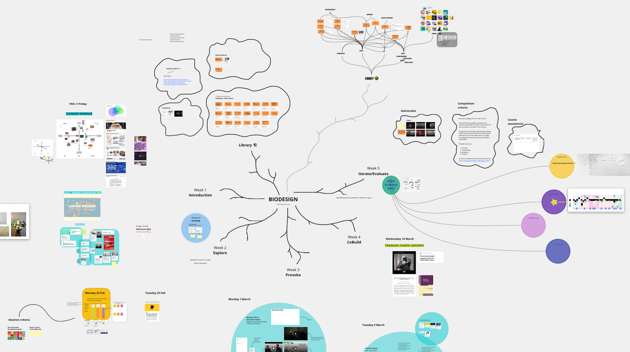
Remote education interactive space on the Miro platform
ImageDesignhögskolanThe course is part of the 'Biodesign Challenge', an international education programme and competition. The core teaching team included Marije de Haas and fresh MFA IxD alumnus Ivan Kunjasic, whose grad project from last year was a biotech wearable for people suffering loss. They were partnered by Giulia Tomasello, an interaction designer exploring female healthcare through biotechnology. Another key contributor was Teresa Frisan, Professor in Cell and Molecular Biology at Umeå University, who incidentally tutored Ivan Kunjasic during his 'Equilibrium' grad project for UID20.
For Romy Koppert, first-year student at the MFA Interaction Design Programme, the course represented her very first taste of biodesign.
"The topic was completely new to all students in my team. Biodesign offers an entirely different set of opportunities and challenges than we're accustomed to. Having completed the course, I now believe that biodesign could have a real impact, first and foremost by opening up people's perspectives", says Romy Koppert.
Through designing with living things, we can tap into almost untouched areas
Romy Koppert, student ixd programme
"The future relationships we will build with biodesigned products and services will be vastly different from the ones we have with inanimate things, because living things carry characteristics that are closer to our humanity".
Cooking with kombucha
The course kicked off with a couple of intense and eventful weeks, where students took an academic deep dive into all matters at the intersection of biology, technology and design. Then, it was time to start physically experimenting with living materials, for example the fermenting of kombucha. The student kitchen at UID became the messy exploration space where the young designers cooked up an abundance of strange concoctions in order to create their own bio plastics or bio textiles.
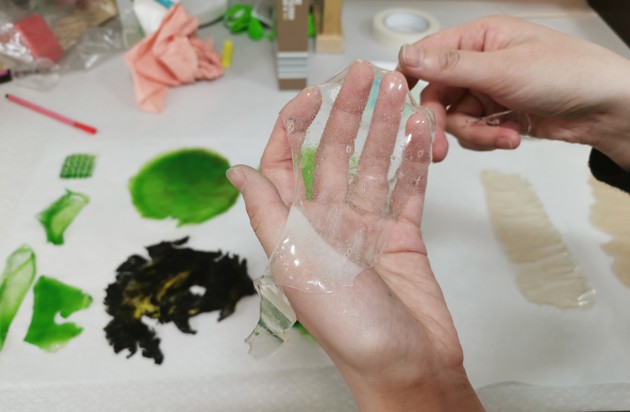
Colourful creations during the intense cooking sessions in the UID kitchen
ImageUmeå Institute of DesignBefore soon, the four groups of students had identified their individual design directions. Using sweat, smell and hormones as bio trackers they began devising a range of interactive biodesign products, as well as sketching the speculative design futures where they could be set.
One such design concept is OLFi, a biological olfactory interface that brings smart home products to life, through smell. The team, consisting of Alex Widua, Cornelia Hulling and Yanyi Lu, wanted to bridge biology and technology while reflecting on human relationships with smart devices. Their final concept is a design speculation on what might happen if microorganisms could give life to our smart devices and allow them to express "emotions" through smell. Quite simply, a body odour system for our smart home products.
We really came across the idea of focusing on smell by chance, realising that it's a subtle but inescapable part of daily life, as well as human-to-human interaction
Cornelia Hulling, student IxD programme
"It is not very common in human-computer interaction, though. Olfactory interfaces have been explored within interaction design before but the difficulties of synthetically recreating smells have made it hard to implement. Working with microorganisms to create the smell for us opened up many new possibilities", says Cornelia Hulling.
With OLFi, the design team wants to shine a light on the mutual perception gap between humans and smart technology. Today, these devices can often sense our movement and behaviour in different ways. There are, however, few opportunities for us humans to sense the actual behaviour and computational processes of our smart home devices. Cornelia and her fellow designers wanted to explore if there was a way to create a more symbiotic, two-way communication between people and their smart products.
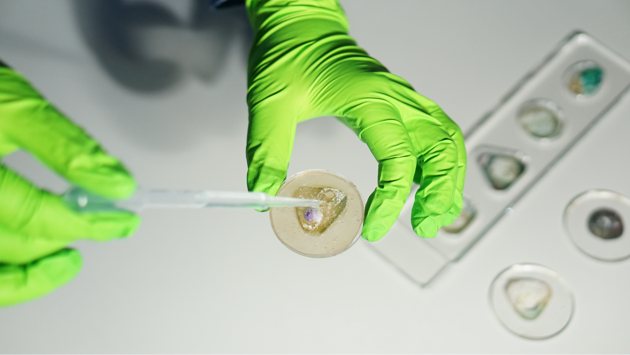
The smell-including OLFi biodesign concept under development
ImageDesignhögskolan"Smart devices often carry a big influence on our daily lives, yet they have a quite subtle physical presence. We can see this in, for example, the development of ambient computing and calm technology. In this project we went in the other direction and made the presence of technology more pronounced. What if Amazon's Alexa had a body odour that changed depending on her activity? Do we want to start closing this gap of perception, and what would it mean if we did?", says Cornelia Hulling.
Sweating on the use of bio data
Another key element of human biology, sweat, became the stepping off point for one of the other student design teams, consisting of Barbara Schußmann, Jan von Loeper and Ruoyun Wang. They utilized hormonal data, specifically cortisol levels in our sweat, to create an app and a digital platform called Swyre, that measures feelings of stress. To gather the hormonal data, the team developed a neck patch that can measure cortisol levels in sweat droplets. The data is then sent to a mobile application allowing people to monitor their own stress levels in real time. Simultaneously, the hormonal data is linked to the user's broader range of digital platforms initiating shifts in personal algorithms geared towards activities that can reduce elements of stress in our everyday life.
At the outset, this interactive product might seem helpful and harmless. But can we trust our smart products to give substantiated health advice based on raw hormonal data? And what happens when corporations and state entities begin harvesting our bio data? Already today, through health and fitness apps, tech companies have started tracking, and collecting, our bio data.
With our design concept, we want to highlight the ethical issues tied to the use of bio data
Ruoyun Wang, student IxD programme
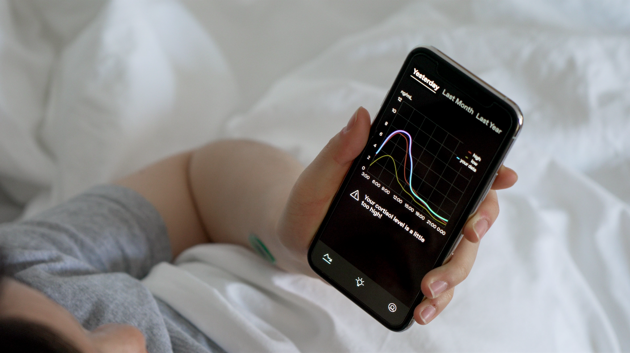
The Swyre app displaying stress levels in real time
ImageUmeå Institute of Design"By visualizing how hormonal data can generate dark patterns in everyday apps we wanted to underline the ethical concerns that might arise with biodesign when there's a lack of transparency. As data has now become the most valuable resource of the 21st century, the influence algorithms have on our way of life continues to grow stronger. The aim of our project is to raise ethical questions on what responsibility we as designers have when it comes to the future of bio data", says Ruoyun Wang.
Teaming up with nature
The overall experience of designing with living things prompted students to view current trends in design from a different vantage point. Through the lens of biodesign, they were able to freely explore speculative future scenarios without being bogged down by "conventional" design thinking. The unpredictability of working with living organisms offered something else. Sometimes it was clarity of vision, other times it was just losing control of the process and allowing nature to take the lead.
Since most possibilities within biodesign have not yet been explored, it automatically makes us think beyond what is possible today
Romy Koppert, student ixd programme
"It triggers speculative designs that are created to be thought experiments and conversation starters, rather than finished consumer products. I believe that as humans we are conditioned to forge different relationships with living things. We are able to relate to them more, to care for them in a different way. To me, this presents endless design opportunities", says Romy Koppert.
Student Design Concept Videos
Team: Dongheng Wu, Christoffer Pedersen, Charlotte Philippe & Connie Jehu
